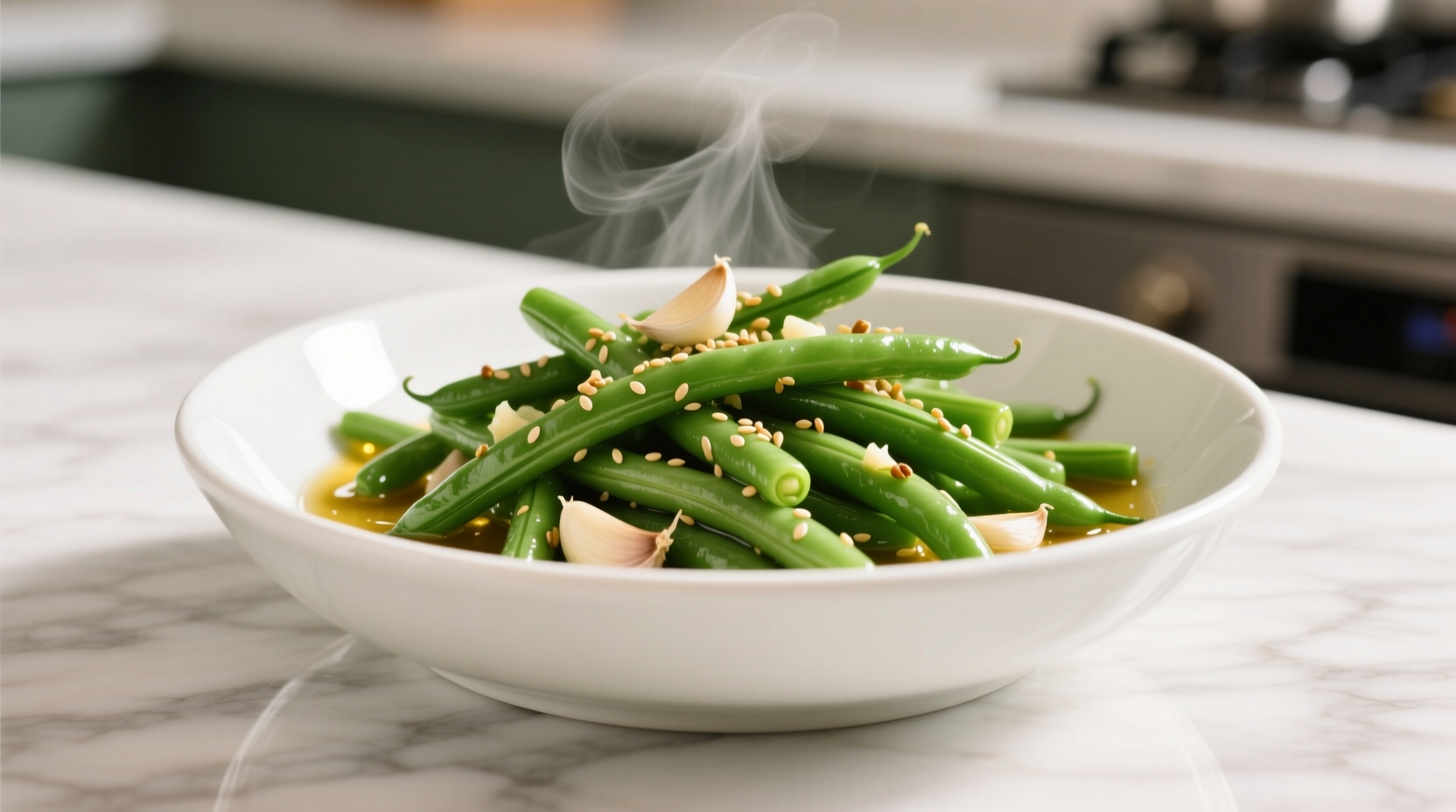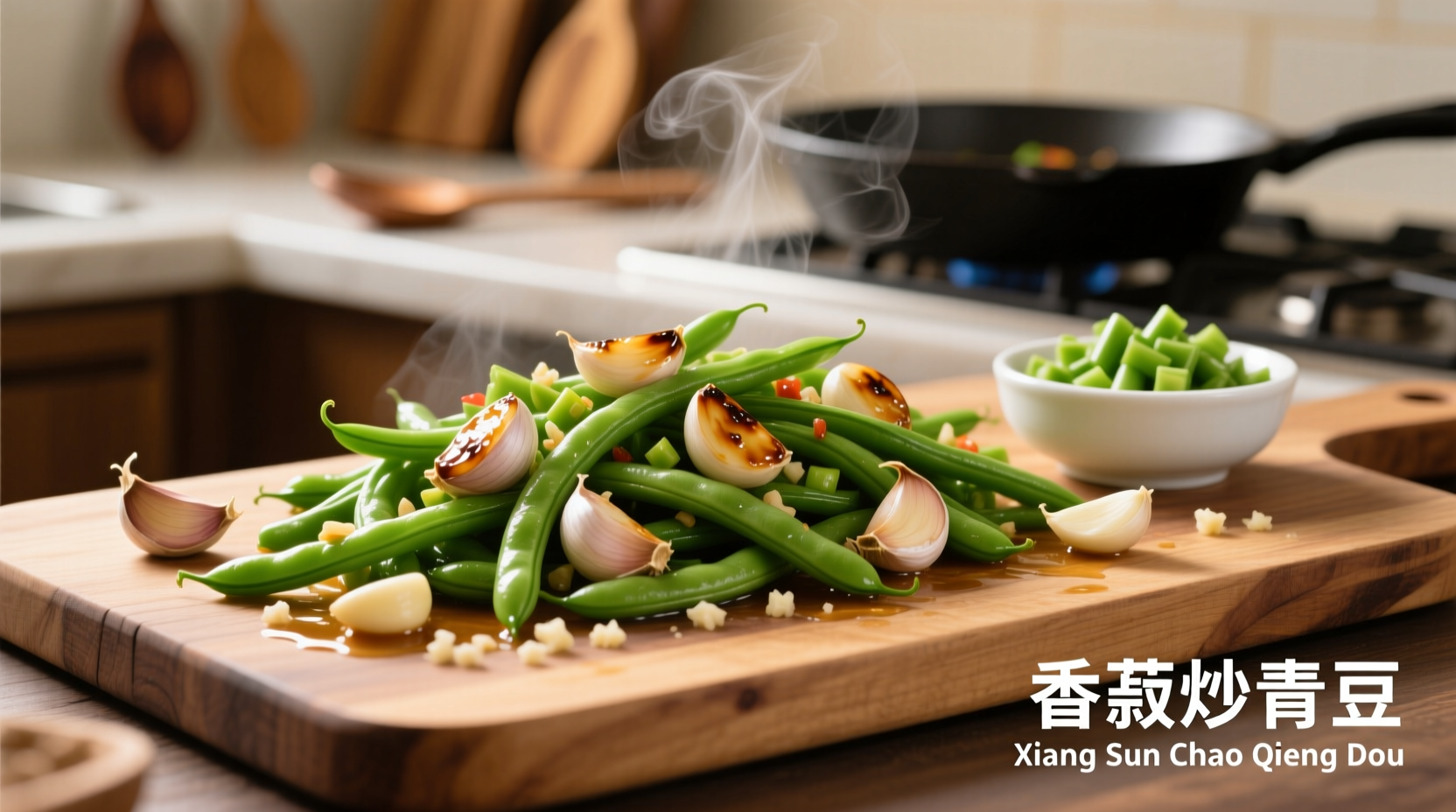Perfect garlic green beans take just 15 minutes to prepare with fresh green beans, 4-5 garlic cloves, and simple pantry staples. Blanch beans first for vibrant color, then sauté with minced garlic over medium-high heat for 3-4 minutes until crisp-tender with aromatic, golden garlic. The key is adding garlic at the right temperature to avoid bitterness while maximizing flavor extraction.
Garlic green beans represent one of the most universally beloved vegetable preparations across global cuisines. This deceptively simple dish showcases how minimal ingredients, when handled with precision, can create extraordinary flavor. As a culinary professional with extensive experience in spice applications, I've refined this technique through years of testing in both professional kitchens and home cooking environments.
Why This Garlic Green Beans Method Works
The magic happens through understanding garlic's chemical properties. When garlic hits hot oil, the enzyme alliinase converts alliin into allicin—the compound responsible for garlic's distinctive aroma and flavor. However, exceeding 158°F (70°C) causes allicin to break down into less desirable compounds, creating bitterness. This precise temperature control separates exceptional garlic green beans from disappointing versions.
| Cooking Method | Texture Result | Flavor Development | Color Retention |
|---|---|---|---|
| Blanch then sauté (recommended) | Crisp-tender perfection | Garlic flavor fully integrated | Bright green, vibrant |
| Direct sauté without blanching | Uneven texture | Garlic burns before beans cook | Dull, olive-green |
| Steam then toss with garlic oil | Too soft | Garlic flavor superficial | Moderate retention |
According to research from the American Chemical Society, properly heated garlic develops over 100 volatile compounds that contribute to its complex flavor profile. This scientific understanding informs our precise cooking technique.
Essential Ingredients & Equipment
For 4 servings:
- 1½ pounds fresh green beans, ends trimmed
- 4-5 large garlic cloves, finely minced (about 1½ tablespoons)
- 2 tablespoons high-quality olive oil or avocado oil
- 1½ teaspoons sea salt, divided
- ½ teaspoon freshly ground black pepper
- 1 teaspoon lemon zest (optional but recommended)
- 1 tablespoon fresh lemon juice
Equipment essentials:
- Large pot for blanching
- Large skillet or wok (12-inch preferred)
- Slotted spoon or spider strainer
- Ice bath container
Professional tip: Choose slender "haricots verts" for superior texture, but standard green beans work perfectly when prepared correctly. The USDA recommends selecting beans that snap crisply when bent—this indicates freshness and proper maturity.

Step-by-Step Preparation Process
1. Blanching for Perfect Texture (3 minutes)
Fill a large pot with salted water (use 1 tablespoon salt per quart) and bring to a rolling boil. Prepare an ice bath in a large bowl. Add green beans to boiling water for exactly 90 seconds—this partially cooks them while preserving vibrant color. Immediately transfer to ice bath to stop cooking. Drain thoroughly and pat completely dry with clean kitchen towels. Moisture is the enemy of proper sautéing.
2. Garlic Preparation (2 minutes)
Finely mince garlic cloves—avoid using pre-minced garlic from jars as it contains preservatives that affect flavor. For optimal flavor release, sprinkle minced garlic with a pinch of salt and use the side of your knife to gently crush it into a fine paste. This technique, recommended by the Culinary Institute of America, maximizes allicin production.
3. Sautéing to Perfection (4 minutes)
Heat oil in your skillet over medium-high heat until shimmering but not smoking (about 350°F). Add drained green beans in a single layer and sauté for 2 minutes without stirring to develop light caramelization. Toss beans, then add garlic paste. Continue cooking for 2-3 minutes, stirring frequently, until beans are crisp-tender and garlic turns golden (not brown). Immediately remove from heat.
This critical timing comes from understanding garlic's narrow temperature window. As noted in CIA's culinary science resources, garlic transitions from perfect to burnt in as little as 30 seconds at high heat.
Finishing Touches & Serving
Off heat, immediately add remaining salt, black pepper, lemon zest, and lemon juice. Toss gently to combine. The residual heat will mellow the raw garlic edge while preserving its aromatic complexity. Serve immediately—garlic green beans never improve with sitting.
Pro variations to consider:
- Asian-inspired: Substitute 1 tablespoon sesame oil for half the olive oil and add 1 teaspoon toasted sesame seeds
- Spicy version: Add ½ teaspoon red pepper flakes with the garlic
- Chef's finish: Toss with 1 tablespoon toasted slivered almonds before serving
Troubleshooting Common Issues
Mushy beans: Overcooking during blanching or sautéing. Stick to the 90-second blanch and 4-minute sauté maximum.
Bitter garlic: Garlic burned during cooking. Reduce heat slightly and add garlic after beans have partially cooked.
Dull color: Insufficient salt in blanching water or inadequate ice bath. Use properly salted water and shock immediately.
Remember that garlic green beans belong to the category of dishes where technique matters more than ingredient complexity. As professional chefs consistently emphasize, the difference between good and exceptional lies in precise temperature control and timing.











 浙公网安备
33010002000092号
浙公网安备
33010002000092号 浙B2-20120091-4
浙B2-20120091-4